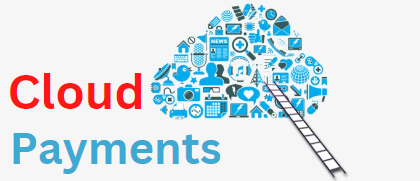How to Implement Cloud Payments in Your Mobile App
In today’s digital age, mobile apps have become an integral part of our lives. From ordering food to booking a cab, mobile apps have made our lives easier and more convenient. One of the key aspects of mobile apps is the ability to make payments seamlessly. Traditionally, mobile app payments were processed through a direct integration with a payment gateway. However, with the advent of cloud technology, a new payment method has emerged – cloud payments.
Cloud payments, also known as cloud-based payments or cloud payment solutions, offer a more flexible and scalable approach to processing payments in mobile apps. Instead of relying on a direct integration with a payment gateway, cloud payments leverage the power of the cloud to securely process transactions. This article will explore the various aspects of implementing cloud payments in your mobile app, including the benefits, choosing the right provider, integrating APIs, ensuring security and compliance, optimizing user experience, implementing subscription and recurring payments, exploring in-app purchases and virtual currency, leveraging analytics and reporting, and embracing the future of mobile app payments.
Understanding the Benefits of Cloud Payments
Before diving into the implementation details, it is important to understand the benefits of cloud payments. One of the key advantages of cloud payments is the scalability it offers. With traditional payment gateways, scaling up to handle a large number of transactions can be a complex and time-consuming process. However, with cloud payments, the infrastructure is already in place, allowing you to easily handle high transaction volumes without any additional setup.
Another benefit of cloud payments is the flexibility it provides. With traditional payment gateways, you are often limited to a specific set of payment methods and currencies. However, with cloud payments, you have the flexibility to offer a wide range of payment options, including credit cards, debit cards, digital wallets, and even cryptocurrencies. This flexibility can help you cater to a larger audience and increase customer satisfaction.
Choosing the Right Cloud Payment Provider for Your Mobile App
Now that you understand the benefits of cloud payments, the next step is to choose the right cloud payment provider for your mobile app. There are several factors to consider when making this decision, including the provider’s reputation, reliability, security measures, pricing structure, and integration options.
First and foremost, it is important to choose a reputable cloud payment provider. Look for providers that have a proven track record in the industry and have worked with reputable companies. Reading reviews and testimonials from other app developers can also give you insights into the provider’s reliability and customer satisfaction.
Security is another crucial factor to consider when choosing a cloud payment provider. Make sure the provider follows industry best practices for data encryption, tokenization, and fraud prevention. Additionally, check if the provider is compliant with relevant security standards, such as PCI DSS (Payment Card Industry Data Security Standard).
Pricing is also an important consideration. Different cloud payment providers have different pricing structures, so it is important to choose one that aligns with your budget and business model. Some providers charge a flat fee per transaction, while others have a tiered pricing structure based on transaction volume. Consider your expected transaction volume and choose a provider that offers competitive pricing.
Integration options are another factor to consider. Look for providers that offer easy-to-use APIs and SDKs (Software Development Kits) that can be seamlessly integrated into your mobile app. The documentation and developer support provided by the provider should also be considered, as it can greatly impact the ease of integration.
Integrating Cloud Payment APIs into Your Mobile App
Once you have chosen the right cloud payment provider, the next step is to integrate their APIs into your mobile app. APIs, or Application Programming Interfaces, allow different software systems to communicate with each other. In the context of cloud payments, APIs enable your mobile app to securely send payment requests to the cloud payment provider and receive responses.
The first step in integrating cloud payment APIs is to familiarize yourself with the documentation provided by the provider. The documentation will outline the various API endpoints, request and response formats, authentication methods, and any additional parameters or headers required.
Next, you will need to implement the necessary code in your mobile app to make API calls. This typically involves making HTTP requests to the API endpoints provided by the provider, passing the required parameters, and handling the responses. Most cloud payment providers offer SDKs for popular mobile platforms, such as iOS and Android, which can simplify the integration process by providing pre-built code and libraries.
During the integration process, it is important to handle errors and exceptions gracefully. Cloud payment APIs may return various error codes and messages in case of failures, such as invalid payment details or insufficient funds. Make sure to handle these errors and display appropriate messages to the user to ensure a smooth payment experience.
Ensuring Security and Compliance in Cloud Payments
Security and compliance are of utmost importance when it comes to processing payments in mobile apps. As a mobile app developer, it is your responsibility to ensure that your app and the cloud payment solution you choose adhere to the highest security standards.
First and foremost, make sure that your mobile app follows secure coding practices. This includes using secure communication protocols, such as HTTPS, to encrypt data transmitted between the app and the cloud payment provider. Additionally, implement proper input validation and sanitization to prevent common security vulnerabilities, such as SQL injection and cross-site scripting.
When choosing a cloud payment provider, ensure that they follow industry best practices for security. Look for providers that offer end-to-end encryption, tokenization, and secure storage of payment data. Tokenization is a process where sensitive payment data, such as credit card numbers, are replaced with unique tokens that have no meaning outside of the payment system. This helps reduce the risk of data breaches and minimizes the impact in case of a breach.
Compliance with relevant regulations, such as PCI DSS, is also crucial. PCI DSS is a set of security standards that all organizations that handle credit card data must comply with. Make sure that your cloud payment provider is PCI DSS compliant and regularly undergoes security audits and assessments.
Optimizing User Experience with Cloud Payments
A seamless and user-friendly payment experience is essential for the success of your mobile app. Cloud payments offer several opportunities to optimize the user experience and increase customer satisfaction.
One way to optimize the user experience is to offer a variety of payment options. As mentioned earlier, cloud payments provide the flexibility to support multiple payment methods, such as credit cards, debit cards, digital wallets, and cryptocurrencies. By offering a wide range of payment options, you can cater to the preferences of different users and increase the chances of a successful payment.
Another way to optimize the user experience is to minimize the number of steps required to complete a payment. Cloud payment providers often offer features such as one-click payments and saved payment methods, which allow users to make payments with minimal effort. By reducing the friction in the payment process, you can increase conversion rates and improve user satisfaction.
Implementing Subscription and Recurring Payments in Your Mobile App
Subscription and recurring payments are common in many mobile apps, especially those that offer premium content or services. Cloud payments provide a convenient and scalable solution for implementing subscription and recurring payments in your mobile app.
To implement subscription payments, you will need to define the various subscription plans offered by your app, such as monthly, quarterly, or annual plans. Each plan should have a unique identifier and pricing information associated with it. When a user subscribes to a plan, you can use the cloud payment APIs to create a recurring payment profile for that user, which will automatically charge their payment method at the specified interval.
It is important to provide clear and transparent information about the subscription plans to your users. Clearly display the pricing, duration, and any additional benefits associated with each plan. Additionally, make it easy for users to manage their subscriptions, such as upgrading or canceling their plans, through your mobile app.
Exploring In-App Purchases and Virtual Currency with Cloud Payments
In-app purchases and virtual currency are popular monetization strategies used by many mobile apps. In-app purchases allow users to buy additional content or features within the app, while virtual currency is a digital currency that can be used to make purchases within the app.
Cloud payments provide a seamless and secure way to implement in-app purchases and virtual currency in your mobile app. By integrating the cloud payment APIs, you can enable users to make purchases directly from within the app, without the need for external payment gateways.
To implement in-app purchases, you will need to define the various products or items available for purchase within your app. Each product should have a unique identifier and pricing information associated with it. When a user makes a purchase, you can use the cloud payment APIs to process the payment and deliver the purchased item to the user.
Virtual currency can be implemented by associating a virtual currency balance with each user account. When a user makes a purchase using virtual currency, you can deduct the appropriate amount from their balance and update it accordingly. The cloud payment APIs can be used to process the payment and update the user’s virtual currency balance.
Leveraging Analytics and Reporting in Cloud Payment Solutions
Analytics and reporting are essential for understanding the performance of your mobile app and making data-driven decisions. Cloud payment solutions often provide built-in analytics and reporting features that can help you gain insights into your app’s payment transactions.
By leveraging the analytics and reporting features provided by your cloud payment provider, you can track key metrics such as transaction volume, revenue, conversion rates, and average transaction value. This data can help you identify trends, measure the effectiveness of marketing campaigns, and optimize your app’s monetization strategy.
Additionally, analytics and reporting can help you identify and prevent fraudulent activities. Cloud payment solutions often include fraud detection and prevention mechanisms that analyze transaction patterns and flag suspicious activities. By regularly monitoring the analytics and reports provided by your payment provider, you can proactively detect and mitigate fraud risks.
FAQ’s
Q.1: What are cloud payments?
Answer: Cloud payments, also known as cloud-based payments or cloud payment solutions, leverage the power of the cloud to securely process transactions in mobile apps. Instead of relying on a direct integration with a payment gateway, cloud payments offer a more flexible and scalable approach to processing payments.
Q.2: What are the benefits of cloud payments?
Answer: Cloud payments offer several benefits, including scalability, flexibility, and ease of integration. With cloud payments, you can easily handle high transaction volumes without any additional setup. Additionally, cloud payments provide the flexibility to offer a wide range of payment options, including credit cards, debit cards, digital wallets, and cryptocurrencies.
Q.3: How do I choose the right cloud payment provider for my mobile app?
Answer: When choosing a cloud payment provider, consider factors such as reputation, reliability, security measures, pricing structure, and integration options. Look for providers with a proven track record in the industry, follow industry best practices for security, offer competitive pricing, and provide easy-to-use APIs and SDKs for integration.
Q.4: How do I integrate cloud payment APIs into my mobile app?
Answer: Integrating cloud payment APIs involves familiarizing yourself with the provider’s documentation, implementing the necessary code in your app to make API calls, and handling errors and exceptions gracefully. Most cloud payment providers offer SDKs for popular mobile platforms, which can simplify the integration process.
Q.5: How can I ensure security and compliance in cloud payments?
Answer: To ensure security and compliance in cloud payments, follow secure coding practices in your mobile app, choose a cloud payment provider that follows industry best practices for security, and ensure compliance with relevant regulations, such as PCI DSS. Implement secure communication protocols, such as HTTPS, and use tokenization to protect sensitive payment data.
Q.6: How can I optimize the user experience with cloud payments?
Answer: To optimize the user experience with cloud payments, offer a variety of payment options, minimize the number of steps required to complete a payment, and provide features such as one-click payments and saved payment methods. By reducing friction in the payment process, you can increase conversion rates and improve user satisfaction.
Conclusion
In conclusion, implementing cloud payments in your mobile app can offer numerous benefits, including scalability, flexibility, and improved user experience. By choosing the right cloud payment provider, integrating their APIs seamlessly, ensuring security and compliance, and optimizing the user experience, you can provide a seamless and secure payment experience for your app users.
Cloud payments also open up new monetization opportunities, such as implementing subscription and recurring payments, in-app purchases, and virtual currency. By leveraging the analytics and reporting features provided by cloud payment solutions, you can gain insights into your app’s payment transactions and make data-driven decisions.
As mobile apps continue to evolve and become an integral part of our lives, embracing the future of mobile app payments is essential. Cloud payments offer a scalable and flexible solution that can help you stay ahead of the competition and provide a seamless payment experience for your users. So, don’t wait any longer – start implementing cloud payments in your mobile app today and unlock the full potential of your app’s monetization strategy.











